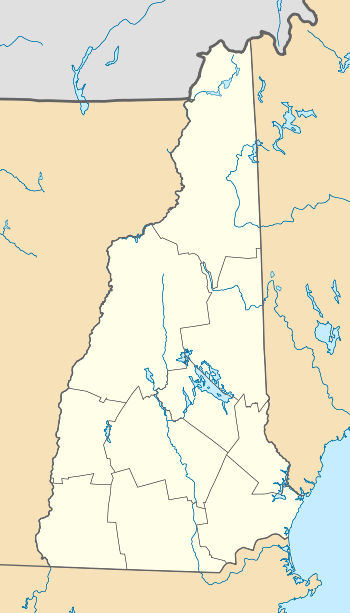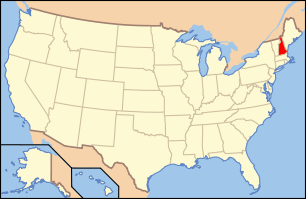Aldworth Manor
Aldworth Manor, also known as the Arthur E. Childs House, is a historic summer estate house in rural Harrisville, New Hampshire. The house is located at the top of a hill at the end of Aldworth Road, formerly the estate's access drive, and was one of the premiere estate houses of the early 20th century in the town. The house was originally built and located in Worcester, Massachusetts, to a design by Worcester architects, the Fuller & Delano Company. The house was inherited by Arthur E. Childs, a Worcester native from a wealthy family, in the early 20th century. Childs had the house transported in pieces to Harrisville by train on seventeen railroad cars, and then hauled to the Chesham Hill Farm, where it was reassembled and restyled into a Renaissance villa.[2]
Aldworth Manor | |
 | |
  | |
| Location | Aldworth Road, on a hill above the north side of the Chesham-Harrisville Rd., Harrisville, New Hampshire |
|---|---|
| Coordinates | 42°57′01″N 72°6′55″W |
| Area | 4 acres (1.6 ha) |
| Built | 1908 |
| Architect | Fuller & Delano Company |
| Architectural style | Late 19th And 20th Century Revivals, American Neo-Renaissance |
| MPS | Harrisville MRA |
| NRHP reference No. | 86003244[1] |
| Added to NRHP | January 14, 1988 |
In addition to moving the house, Childs extensively landscaped the farm property, which was 500 acres (200 ha) at its greatest extent. The entry drive is flanked by rhododendrons Childs had imported, and built an elaborate terraced garden east of the house. Beyond the terraced garden is a reflecting pool and pergola supported by Tuscan columns. South of the pergola is a garden house with tile roof and brick flooring. A carriage house from c. 1914 (architects Kilham and Hopkins) stands to the northwest of the main house.[2]
The property has seen a variety of uses in the years since Childs built it. The property has been reduced in size, and the main house has had mainly institutional owners. It has been used as a sanatorium, served as campus for several educational institutions, including Thomas More School, a boys' boarding school, in the 1960s, Antioch University New England, and as a missionary publishing house. These uses, necessitating alterations of the main house's interior, have to some extent compromised its integrity. The Mountain Missionary Society undertook some restorative work in the 1980s.[2]
After being in danger of demolition,[3] a new owner purchased the manor in 2014 and began restoring it in 2015. It now serves as a venue for weddings and other events.[4]
A 4-acre (1.6 ha) parcel including the main house and a number of outbuildings was listed on the National Register of Historic Places in 1988.[1]
References
- "National Register Information System". National Register of Historic Places. National Park Service. July 9, 2010.
- "NRHP nomination for Aldworth Manor". National Park Service. Retrieved 2014-03-20.
- Demolition Alert: Aldworth Manor Retrieved 2019-6-11.
- Aldworth Manor: About Us. Retrieved 2019-06-11.
| Wikimedia Commons has media related to Aldworth Manor. |
